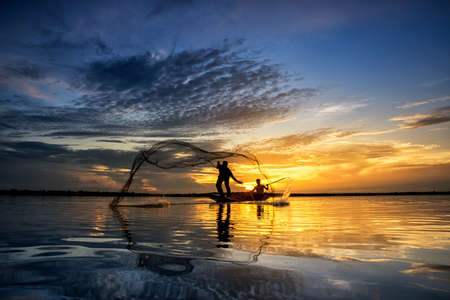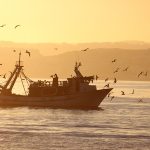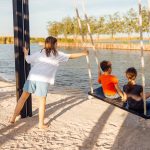1. Understanding Ethical Angling
Ethical angling is all about fishing in a way that respects the environment, protects fish populations, and ensures future generations can enjoy the same outdoor experiences. When visiting U.S. National Parks and protected waterways, it’s especially important to follow ethical practices to preserve these treasured ecosystems.
Catch and Release Best Practices
One of the core principles of ethical fishing is practicing catch and release responsibly. This helps maintain healthy fish populations while still enjoying the sport. Here are some best practices to follow:
| Best Practice | Description |
|---|---|
| Use Barbless Hooks | Makes it easier to release fish without causing injury. |
| Keep Fish Wet | Minimizes stress by keeping the fish in water as much as possible during handling. |
| Limit Air Exposure | Avoid keeping the fish out of water for more than a few seconds. |
| Revive Before Release | Hold the fish gently in the water until it swims away on its own. |
Proper Handling Techniques
Handling fish with care reduces injury and increases their chances of survival after release. Here are a few tips:
- Wet your hands before touching a fish to protect its slime coat.
- Avoid squeezing or dropping the fish.
- Support the fish horizontally with both hands—one under the head, one near the tail.
- Remove hooks gently using pliers or a hook remover tool.
Minimizing Harm to Aquatic Life
Apart from handling individual fish carefully, ethical anglers also consider their overall impact on aquatic ecosystems. This includes:
- Packing out all trash, including fishing line and bait containers.
- Staying on designated trails and boat launches to avoid damaging sensitive habitats.
- Using non-lead tackle to prevent poisoning birds and other wildlife.
- Avoiding fishing during spawning seasons when fish are most vulnerable.
Why It Matters in Protected Areas
U.S. National Parks and protected waterways are home to some of the countrys most fragile aquatic habitats. Ethical angling helps keep these waters clean, supports conservation efforts, and shows respect for public lands we all share. When you fish responsibly, youre not just enjoying nature—you’re helping protect it too.
2. Know Before You Go: Regulations and Permits
Before you cast your line in any U.S. national park or protected waterway, its essential to understand the rules that help preserve these natural treasures. Fishing in these areas isnt just about having fun—its also about doing your part to protect wildlife and habitats for future generations.
Why Check Regulations?
Each national park and protected waterway has its own set of fishing regulations based on local ecosystems, wildlife conservation needs, and seasonal changes. What’s allowed in one location might be restricted or completely banned in another. Ignoring these rules can lead to fines—or worse, harm the environment you came to enjoy.
Licenses and Permits
Most places require a state-issued fishing license, even within federal lands like national parks. Some locations may also need special permits or day-use passes. Always check both state and federal requirements before planning your trip.
Common Requirements by Location Type
| Location Type | License Needed | Special Permits | Where to Check Rules |
|---|---|---|---|
| National Parks (e.g., Yellowstone) | Yes (State License) | Often Yes (Park-specific permit) | NPS.gov + State Fish & Wildlife Dept |
| Wildlife Refuges | Yes (State License) | Sometimes Required | FWS.gov + Local Office |
| State Parks with Protected Waters | Yes (State License) | No or Minimal | State Park Website |
Know Restricted Areas
Certain zones within parks and waterways are off-limits to fishing to protect spawning grounds, endangered species, or fragile ecosystems. These areas are clearly marked on park maps or signs posted near the water. Respecting these boundaries is a key part of ethical angling.
Quick Tips:
- Check the official park website before visiting.
- Download maps showing designated fishing zones.
- If unsure, ask a park ranger or visitor center staff.
- Carry proof of your license and permits at all times while fishing.
Being informed not only keeps you legal—it helps ensure that America’s most beautiful fishing spots stay healthy and open for everyone to enjoy.
![]()
3. Respecting Wildlife and Natural Habitats
When fishing in U.S. National Parks and protected waterways, its important to remember that youre stepping into a delicate ecosystem filled with native wildlife and sensitive habitats. Ethical angling means more than just following fishing regulations — it also involves showing respect for the animals and environment around you.
Why It Matters
Wildlife and natural habitats are essential parts of healthy ecosystems. Disturbing animals or damaging their homes can lead to long-term negative effects, not only on fish populations but also on birds, mammals, insects, and plant life that share the same environment. By practicing mindful behavior, anglers help preserve these areas for future generations.
Best Practices to Follow
Here are some simple yet effective ways to minimize your impact while enjoying your time outdoors:
| Action | Why It’s Important |
|---|---|
| Keep a safe distance from nesting birds and spawning fish | These are critical times for wildlife reproduction. Getting too close can cause stress or even force animals to abandon their nests or eggs. |
| Stay on designated trails and access points | Wandering off-trail can damage fragile vegetation and increase erosion, which affects both land and water quality. |
| Avoid loud noises or sudden movements | These can scare wildlife, disrupt feeding or mating behaviors, and create unnecessary stress on animals. |
| Pack out all trash, including fishing line and bait containers | Litter can harm animals that ingest or get tangled in it, and it pollutes the natural beauty of the area. |
Be Aware of Seasonal Closures
Many parks have seasonal closures to protect specific species during breeding or migration periods. Always check with park rangers or official websites before heading out to ensure youre fishing in open, approved areas.
Quick Tips:
- Use binoculars or zoom lenses instead of approaching animals for a closer look.
- If an animal changes its behavior because of your presence, youre probably too close — back away slowly.
- Teach kids about respecting nature while they learn to fish — its never too early to build good habits.
Your Role as a Steward of Nature
As an angler, youre part of a larger outdoor community that values conservation and sustainability. Every small step you take toward protecting wildlife and habitats helps keep Americas natural treasures thriving for generations to come.
4. Leave No Trace on the Water
Fishing in U.S. National Parks and protected waterways is a privilege that comes with responsibility. Practicing Leave No Trace (LNT) principles helps keep these natural areas healthy and beautiful for future generations. Here’s how anglers can follow the seven LNT principles while out on the water:
1. Plan Ahead and Prepare
Check local fishing regulations, weather conditions, and park rules before heading out. Make sure you have the right gear, maps, and knowledge to avoid damaging sensitive environments or getting into unsafe situations.
2. Travel and Camp on Durable Surfaces
Stick to established trails, campsites, and boat launches to minimize your impact on natural habitats. Avoid creating new paths or disturbing shoreline vegetation.
3. Dispose of Waste Properly
Packing out all trash—including fishing line, bait containers, food wrappers, and any other waste—is essential. Even biodegradable items like fruit peels can harm wildlife or disrupt ecosystems.
Common Angling Trash & How to Handle It
| Item | Disposal Method |
|---|---|
| Fishing line | Recycle at designated monofilament recycling bins or pack out |
| Bait containers | Pack out and dispose of in trash receptacles |
| Hooks/lures | Secure in tackle box; never leave behind |
| Food wrappers/leftovers | Pack out completely; do not bury or burn |
4. Leave What You Find
Avoid taking rocks, plants, or historical artifacts. Let others enjoy the same experience by leaving nature untouched.
5. Minimize Campfire Impact
If camping near fishing spots, use a camp stove instead of building a fire. In areas where fires are allowed, use established fire rings and keep fires small.
6. Respect Wildlife
Observe animals from a distance and never feed them. Keep noise levels down and store food securely to prevent attracting wildlife.
7. Be Considerate of Other Visitors
Share the water respectfully with fellow anglers, paddlers, hikers, and wildlife watchers. Keep your gear organized and avoid blocking access points or fishing spots.
Eco-Friendly Tackle Tips
- Use lead-free sinkers to prevent poisoning birds and aquatic life.
- Select biodegradable fishing lines when possible.
- Avoid plastic lures that can break off and pollute the water.
Preventing the Spread of Invasive Species
Clean your gear—boats, waders, boots, rods—before moving between different bodies of water. Invasive species like zebra mussels and aquatic plants can hitch a ride on wet equipment and harm native ecosystems.
Steps to Clean Your Gear
- DRAIN: Remove water from boats/coolers/live wells after each trip.
- CLEAN: Scrub gear with warm water or a mild bleach solution.
- DRY: Let everything air dry for at least 48 hours before reuse in another location.
By following these practices, ethical anglers help preserve America’s treasured waters for everyone to enjoy.
5. Engaging with Park Rangers and Local Communities
Fishing in U.S. National Parks and protected waterways is a privilege that comes with responsibility. One of the best ways to fish ethically in these areas is by building positive relationships with park rangers and local communities. These connections help ensure the long-term health of the environment and enhance your overall angling experience.
Talk to Park Rangers
Park rangers are not just enforcers—theyre stewards of the land and valuable sources of knowledge. Before casting your line, take a few minutes to speak with a ranger at a visitor center or check-in station. They can provide up-to-date information on fishing regulations, wildlife activity, and conservation efforts specific to the area.
Why Its Important:
| Action | Benefit |
|---|---|
| Talking to rangers | Ensures you follow current rules and avoid violations |
| Asking questions | Helps you understand local ecosystems and species |
| Building rapport | Makes your presence as an angler more welcomed |
Report Violations Responsibly
If you witness someone breaking fishing regulations—like keeping undersized fish, using banned bait, or fishing in restricted zones—report it to a ranger or use official hotlines. Staying silent can harm fish populations and damage habitats.
Tips for Reporting:
- Be respectful and avoid direct confrontation.
- Take note of details: time, location, description of the incident.
- Use official channels or report in person at ranger stations.
Support Conservation Efforts
You don’t have to be a scientist or full-time activist to make a difference. Many national parks offer volunteer programs focused on habitat restoration, trail clean-up, and educational outreach. Even small contributions help protect these waters for future generations of anglers.
Ways to Get Involved:
| Activity | How It Helps |
|---|---|
| Volunteer clean-up days | Keeps waterways free from trash and pollution |
| Citizen science projects | Provides data for conservation planning |
| Advocacy through local organizations | Supports policies that protect natural resources |
The more anglers actively engage with park staff and local communities, the stronger our collective impact becomes in preserving Americas treasured fishing spots.
6. Educating the Next Generation of Anglers
Passing on ethical angling practices is one of the most important responsibilities for today’s experienced anglers. When we take the time to mentor young people and beginners, we help ensure that America’s natural waterways and national parks are respected and preserved for generations to come.
The Importance of Leading by Example
Kids and newcomers learn best by watching others. When seasoned anglers follow the rules, respect wildlife, clean up after themselves, and handle fish properly, it sets a strong example. By simply showing how its done—like practicing catch-and-release or avoiding overfished areas—we teach more than any rulebook ever could.
Simple Ways to Model Respectful Fishing Behavior:
| Action | Why It Matters |
|---|---|
| Use barbless hooks | Reduces harm to fish during catch-and-release |
| Pack out all trash | Keeps parks clean and safe for wildlife |
| Respect fishing limits | Helps maintain healthy fish populations |
| Give space to other anglers | Promotes a positive experience for everyone |
Sharing Knowledge About Environmental Stewardship
Mentoring isnt just about teaching how to cast or tie a knot. Its also about explaining why we protect certain habitats, how pollution affects fish health, or what invasive species can do to an ecosystem. These lessons stick with young anglers and shape their future behavior.
Topics to Discuss with New Anglers:
- The importance of native fish species in local ecosystems
- How water quality affects fish survival and reproduction
- The role of national parks in protecting aquatic life
- Why some areas are off-limits or catch-and-release only
Creating Opportunities for Learning
You don’t have to be a certified instructor to make a difference. Invite a neighbors kid on your next fishing trip, volunteer at a local youth fishing clinic, or simply strike up conversations with newcomers at the dock. Every small effort helps build a culture of responsible fishing.
Remember:
If we want our lakes, rivers, and streams to thrive—and remain open for public use—we must teach others how to care for them properly. That starts with each of us setting a good example every time we head out on the water.


